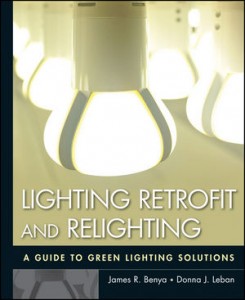Lighting Education
Conscientious daylighting and lighting design are paramount to successful “green” buildings.
How does one keep up with rapid changes in product availability and research, particularly in lighting? Obviously, we cannot all attend every conference and seminar. At Light/Space/Design, we make education our standard.
Not only do we keep abreast of the latest technology, we believe strongly in widening the availability of that knowledge to less specialized professional colleagues and clientele through consulting
and education.
Online Lighting Education
Courses by architect/lighting designer and educator Donna Leban, AIA, LCare now available on-line through RedVector.com, the leading provider of continuing education for licensed professionals.
These courses are intended for design professionals who would like to learn about current lighting practice, technologies, and the science behind what you see.
Courses are designed to be fun, as well as challenging the way
you’ve thought about lighting and lighting design.
They are suitable for a wide range of professionals, contractors, designers,
and those just interested in being better informed about lighting issues.
Current course offering includes:
Light/Space/Design provides professional level seminars for many organizations. Some of theseinclude:
Two Hour to Two Day Seminars
Seminars on lighting topics are arranged for professional organizations, or as internal continuing education for architectural and engineering firms. Combined groups of architects, engineers, and designers are often great for interdisciplinary discussion. All courses involve lively discourse and problem solving. We would be happy provide a proposal that meets your educational needs.
Courses can be certified for continuing education credits through the American Institute of Architects and the National Council of Qualified Lighting Professionals. The content of the program is modified for the specific needs of the group.
- Total Light Management – covers scalable lighting control systems required to meet the demands of LEED, new energy codes, and client demands for flexible user-friendly solutions. Special emphasis on advantages of solid state (LED) fixtures in lighting control systems.
- Lighting with LED – explores cost effective solutions for both retrofit and new construction. Learn about how to evaluate manufacturers claims using recommended test reports, and special considerations when retrofitting with LED.
- Daylighting – Designing a space for daylighting, integrating luminaires, lighting, and shading controls for optimum flexibility and energy savings.
- Lighting Design Process – integrating architectural, lighting, and engineering design for optimal results. This course is especially useful for those who wish to learn more about LEED project certification requirements for integrated design.
- Outdoor Lighting and Dark Sky Protection – a fascinating and complex issue that explores the human response to light at night including adaptation, the perception of safety with security lighting, best practices in decorative outdoor lighting for various environments, and outdoor lighting ordinances. Current focus on use of LED for outdoor environments.
- Outdoor Lighting Tours – custom designed tours of your communities, which help local citizens, planning and zoning officials and boards, and local designers and contractors better understand quality issues in outdoor lighting. This is an excellent prerequisite for any town wanting to create a lighting ordinance using the IESNA Model Lighting Ordinance.
- Lighting and Energy Codes – best practice establishes a baseline that can be readily improved upon with thoughtful design, modeling, use of control systems and current lighting technology. Explores the need for close coordination of daylighting, lighting, electrical, and HVAC for best results.
- Lighting for Retail Merchandising – one of the great opportunities for improvement in energy efficiency and sustainability. How to improve comfort and energy efficiency without any loss of aesthetic and dramatic appeal. This is a great course for retail designers on best current lighting technologies and practices.
- CAD Based Lighting Software – an essential element of Sustainable Design. Learn to properly design lighting systems to achieve the desired lighting quality, as well as the most energy efficient lighting design. This course is best taught to small groups in an architectural or engineering offices with free software download.
- Improving the bottom line through quality design–for Electrical Contractors and Suppliers. This course is aimed at improving standard lighting practices, as well as energy efficiency, by educating suppliers and contractors how to take advantage of utility programs and local design assistance.
Lighting Retrofit and Relighting – A Guide to Green Lighting Solutions
The ultimate guide to the retrofitting of lighting for greater efficiency and performance
Retrofitting outdated energy-guzzling lighting components with green energy-saving alternatives is a process that promotes sustainability and offers significant benefits for businesses, contractors, and the community at large. Not only can retrofitting improve the overall quality and functionality of light, it also can make spaces safer, easier and less costly to maintain, and more comfortable to inhabit. From lighting technology to retrofit financial analysis, Lighting Retrofit and Relighting evaluates the latest lighting system types, then demonstrates how to apply them for the greatest functional and cost-saving benefit. This book:
- Discusses the recent advances in lighting equipment and retrofittable controls, for both interior and outdoor use
- Explains how to do a lighting audit to identify and evaluate logical retrofit choices
- Includes case studies of retrofits, illustrating improvements in the quality and efficacy of new lighting
- Demonstrates how cost savings realized over time can not only pay for new equipment but produce a return on the investment
Lighting Retrofit and Relighting serves as an ideal reference for students or professionals—whether they are energy auditors, designers, installers, facilities managers, or manufacturers—by taking a close look at the most current lighting technology illuminating pat



